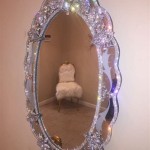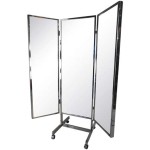How to Screen Mirror Your iPhone to Macbook Air and TV
Screen mirroring, the process of wirelessly duplicating the display of one device onto another, has become an increasingly popular method for sharing content, giving presentations, or simply enjoying media on a larger screen. The ability to mirror an iPhone's display to a Macbook Air or a television offers versatility for both personal and professional use. This article details methods and requirements for achieving successful screen mirroring across these devices.
The underlying technology for screen mirroring relies on wireless communication protocols. Apple devices primarily utilize AirPlay, a proprietary protocol designed for seamless integration within the Apple ecosystem. AirPlay allows for both screen mirroring and streaming, meaning that content can be sent to another device without necessarily mirroring the entire screen. Alternatives like Bluetooth and Wi-Fi Direct also facilitate screen mirroring, though AirPlay typically provides the most optimized experience for Apple devices.
Screen Mirroring iPhone to Macbook Air
Mirroring an iPhone to a Macbook Air can be achieved through various third-party applications. While Apple does not natively support screen mirroring from an iPhone directly to a Macbook Air without third-party software, solutions exist to bridge this gap. These applications often leverage Wi-Fi connectivity to transmit the iPhone's display to the Macbook Air.
One common method involves utilizing applications that simulate an AirPlay receiver on the Macbook Air. These applications allow the Macbook to act as a receiving device for AirPlay streams, effectively mirroring the iPhone's screen. The specific steps involved will vary depending on the chosen application, but the general process involves downloading and installing the application on the Macbook Air, ensuring both devices are connected to the same Wi-Fi network, and then selecting the Macbook Air as the AirPlay destination from the iPhone's Control Center.
Before proceeding, it is crucial to ensure the Macbook Air meets the minimum system requirements specified by the chosen application. Compatibility issues can arise if the operating system or hardware does not meet the necessary specifications. Reviewing user reviews and documentation can provide valuable insights into the application's performance and reliability.
Troubleshooting steps for mirroring iPhone to Macbook Air typically involve verifying the Wi-Fi connection’s stability, ensuring both devices are on the same network, and checking for software updates for both the iPhone and the mirroring application on the Macbook Air. Firewall settings on the Macbook Air could also impede the connection, requiring temporary disabling or configuration to allow the mirroring application to function correctly. Battery management settings on either device could also cause interruptions, so ensure both are adequately charged or connected to a power source.
Using QuickTime Player is another method, although less direct as it involves recording from the iPhone. Connect the iPhone to the Macbook Air using a Lightning to USB cable. Open QuickTime Player on the Macbook Air. Select “File” then “New Movie Recording.” In the new window, click the dropdown arrow next to the record button to select your iPhone as the camera input. This method displays the iPhone screen in QuickTime, which can then be used for presentations or screen recordings, effectively achieving a form of mirroring.
The QuickTime method has limitations; it requires a wired connection and can be less responsive than wireless solutions. However, it provides a stable and reliable connection, particularly useful in situations where Wi-Fi connectivity is unreliable or unavailable. The quality of the mirrored display will depend on the cable connection and the iPhone's output resolution.
Consider privacy implications when mirroring content, especially in public settings. Be aware of the information being displayed and avoid sharing sensitive data inadvertently. Secure Wi-Fi networks are preferable for screen mirroring to protect data transmitted between devices.
Screen Mirroring iPhone to TV
Mirroring an iPhone to a television is a more commonly supported feature, particularly with smart TVs that support AirPlay or other screen mirroring protocols. Several methods can be employed to achieve this, each with varying requirements and capabilities.
The most straightforward method is using AirPlay to an AirPlay-compatible smart TV. Most modern smart TVs from brands like LG, Samsung, Sony, and Vizio include AirPlay 2 support. To mirror an iPhone to an AirPlay-compatible TV, ensure both devices are connected to the same Wi-Fi network. Open the Control Center on the iPhone by swiping down from the top-right corner of the screen (or swiping up from the bottom on older iPhones). Tap the "Screen Mirroring" icon. A list of available AirPlay devices will appear. Select the desired TV from the list. A passcode may appear on the TV screen, which must be entered on the iPhone to complete the connection.
AirPlay allows for seamless mirroring and streaming of content, including videos, photos, and apps. The resolution and frame rate will depend on the TV's capabilities and the iPhone's output settings. Some TVs also offer additional features like adjusting the aspect ratio and screen position for optimal viewing.
If the TV does not natively support AirPlay, an Apple TV device can be used. Apple TV connects to the TV via HDMI and acts as an AirPlay receiver. The process for mirroring to an Apple TV is similar to mirroring to an AirPlay-compatible smart TV, involving selecting the Apple TV from the list of available AirPlay devices in the iPhone's Control Center.
Alternatively, a Lightning Digital AV Adapter can be used to connect the iPhone to the TV via HDMI. This adapter provides a wired connection, ensuring a stable and reliable mirroring experience. Simply plug the adapter into the iPhone's Lightning port and connect an HDMI cable from the adapter to the TV. Select the correct HDMI input on the TV to view the iPhone's screen. This method offers a direct connection, bypassing the need for Wi-Fi connectivity. It is especially useful in situations where Wi-Fi is unstable or unavailable, or for applications that require minimal latency.
Some smart TVs support Miracast, another screen mirroring protocol. The process for connecting to a Miracast-enabled TV involves enabling screen mirroring on the TV and then selecting the TV from the list of available devices on the iPhone. However, iOS devices do not natively support Miracast and often require a third-party app to facilitate the connection. Success can vary, and AirPlay generally offers a more reliable and optimized experience within the Apple ecosystem.
When mirroring to a TV, ensure the TV's display settings are configured correctly for optimal viewing. Adjust settings such as brightness, contrast, and sharpness to achieve the desired picture quality. Additionally, ensure the audio output settings are configured correctly to route audio to the TV speakers or an external sound system.
Addressing Common Issues and Optimization
Several factors can impact the quality and stability of screen mirroring. Wi-Fi interference, network congestion, and outdated software can all contribute to performance issues. Optimizing these aspects can significantly improve the mirroring experience.
To minimize Wi-Fi interference, ensure the router is placed in a central location and away from other electronic devices that may cause interference. Using a 5 GHz Wi-Fi network instead of a 2.4 GHz network can also reduce interference and provide a more stable connection. Consider wired ethernet connections for the TV or Apple TV to eliminate Wi-Fi as a potential bottleneck.
Regularly updating the software on both the iPhone and the receiving device (Macbook Air or TV) is crucial. Software updates often include performance improvements and bug fixes that can enhance the screen mirroring experience. Outdated software can lead to compatibility issues and reduced performance.
Consider the specific use case when choosing a mirroring method. For presentations or applications requiring minimal latency, a wired connection via a Lightning Digital AV Adapter may be preferable. For casual media consumption, AirPlay to an AirPlay-compatible TV or Apple TV provides a convenient and wireless solution. The desired resolution should also be considered, as higher resolution mirroring requires more bandwidth and processing power.
For persistent issues, restarting both the iPhone and the receiving device can often resolve temporary glitches. Resetting network settings on the iPhone can also help to resolve connectivity issues. If mirroring is consistently unreliable, consider contacting Apple Support or the manufacturer of the receiving device for further assistance.
Another thing to be aware of is the aspect ratio on both devices. If the iPhone's aspect ratio differs dramatically from the screen of the TV or Macbook Air, then distortion or cropping may occur. Some devices will offer options to adjust the aspect ratio, like "stretch to fit" or "maintain aspect ratio". Understanding these settings and testing the display before a presentation or movie night can minimize frustration.
Finally, consider the security implications mentioned above. Public Wi-Fi networks are generally less secure than private networks, and this could expose your data during screen mirroring processes. Use a secure, password-protected Wi-Fi network whenever possible, and be mindful of what information is being displayed on the mirrored screen.

How To Use Apple Airplay Mirror Your Iphone Mac Screen On Tv Roku And More Cnet

How To Use Apple Airplay Mirror Your Iphone Mac Screen On Tv Roku And More Cnet

How To Airplay From Iphone Or Ipad Mac 9to5mac

2024 How To Mirror Iphone Display Mac Ios 14 And Big Sur

Full Guide Efficiently Mirror Iphone To Macbook Wireless

Use Airplay To Stream Or Mirror The Screen Of Your Iphone Ipad Apple Support

Use Airplay To Stream Or Mirror The Screen Of Your Iphone Ipad Apple Support

2024 Updated How To Mirror Iphone Mac With 5 Methods

Use Airplay To Stream Or Mirror The Screen Of Your Iphone Ipad Apple Support

Use Airplay To Stream What S On Your Mac An Hdtv Apple Support








